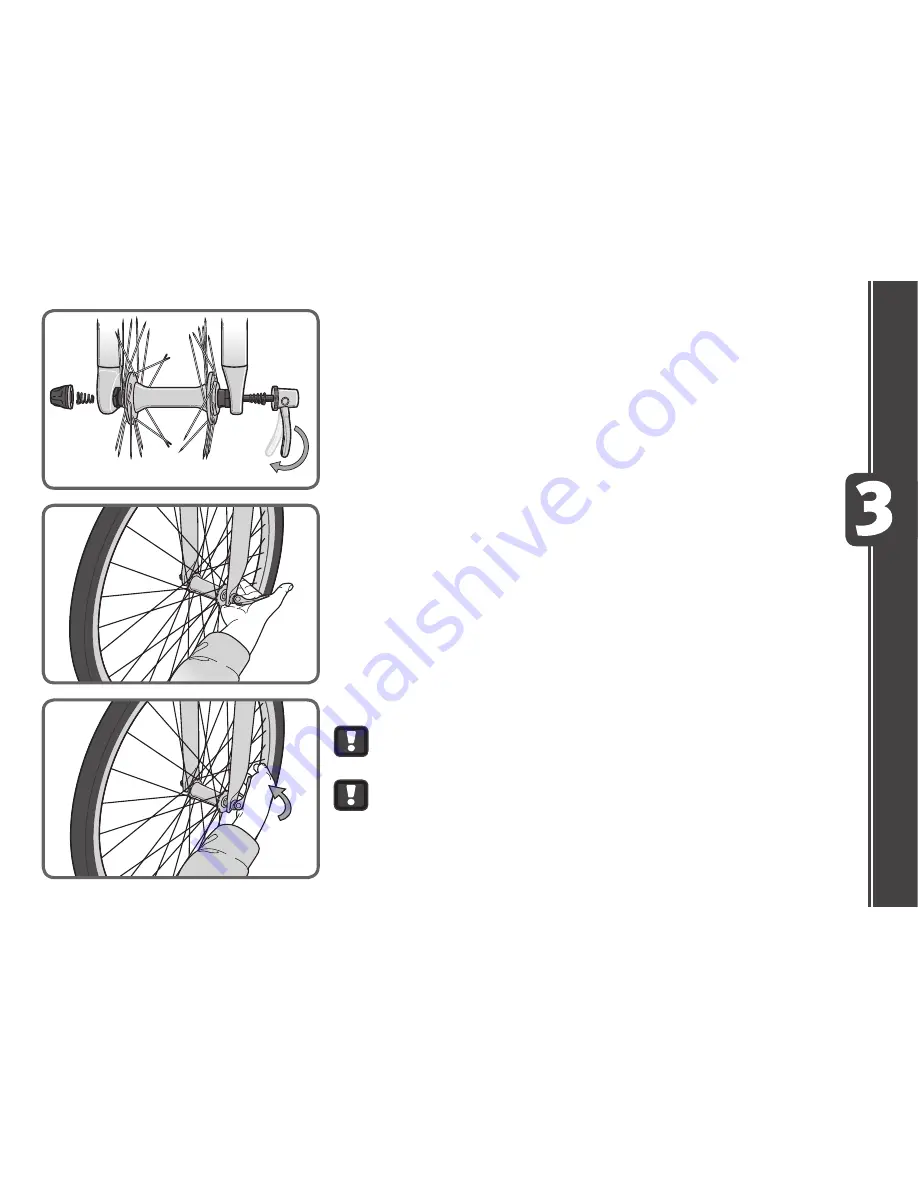
29
Quick Release Wheels
1. Locate the quick release skewer from the small parts carton of your bicycle. Some
tire tread patterns have a direction, so compare your front tire and rear tire of the
bicycle so that both tread patterns face the same way.
2. Unscrew the lock nut from the quick release skewer, remove outer spring and slide
the skewer through the front wheel axle so that the lever is on the left side of the
bike (the side opposite the chain) (Fig. 3.10).
3. Install spring and then start to thread the lock nut back onto the skewer, but do not
tighten too far.
4. Slide the wheel into the fork wheel slots and be sure that the wheel is centered.
5. Inspect the lever, note that there’s an “open” and a “closed” position. Move the
lever so it is in the “open” position. With one hand on the lever and one hand on
the lock nut, start to hand tighten the lock nut until you start to feel some resistance
with the fork (Fig. 3.11).
6. Try to close the lever. If it closes easily, open it up, and tighten the lock nut further.
If it is too difficult to close, open the lever up, and loosen the lock nut a little and
try again.
7. The quick release lever should be difficult to push closed with your palm, but should
be possible. Practice opening and closing the lever until you feel comfortable. DO
NOT attempt to tighten the wheel by turning the lever to tighten; the lever is for
closing, the lock nut (opposite side) is for adjusting the tension (Fig. 3.12).
Next go back and check that the handlebars are perpendicular to the front wheel,
go back to handlebar assembly and re-adjust if needed.
All quick release levers should be inspected before every ride to be sure
they are fully closed and secure. Failure to properly close a quick release
lever can cause loss of control of the bicycle resulting in injury or death.
Make sure the wheel is properly seated and the quick release is
properly closed.
ASSEMBL
Y
Close
3.10
3.11
3.12
29
















































